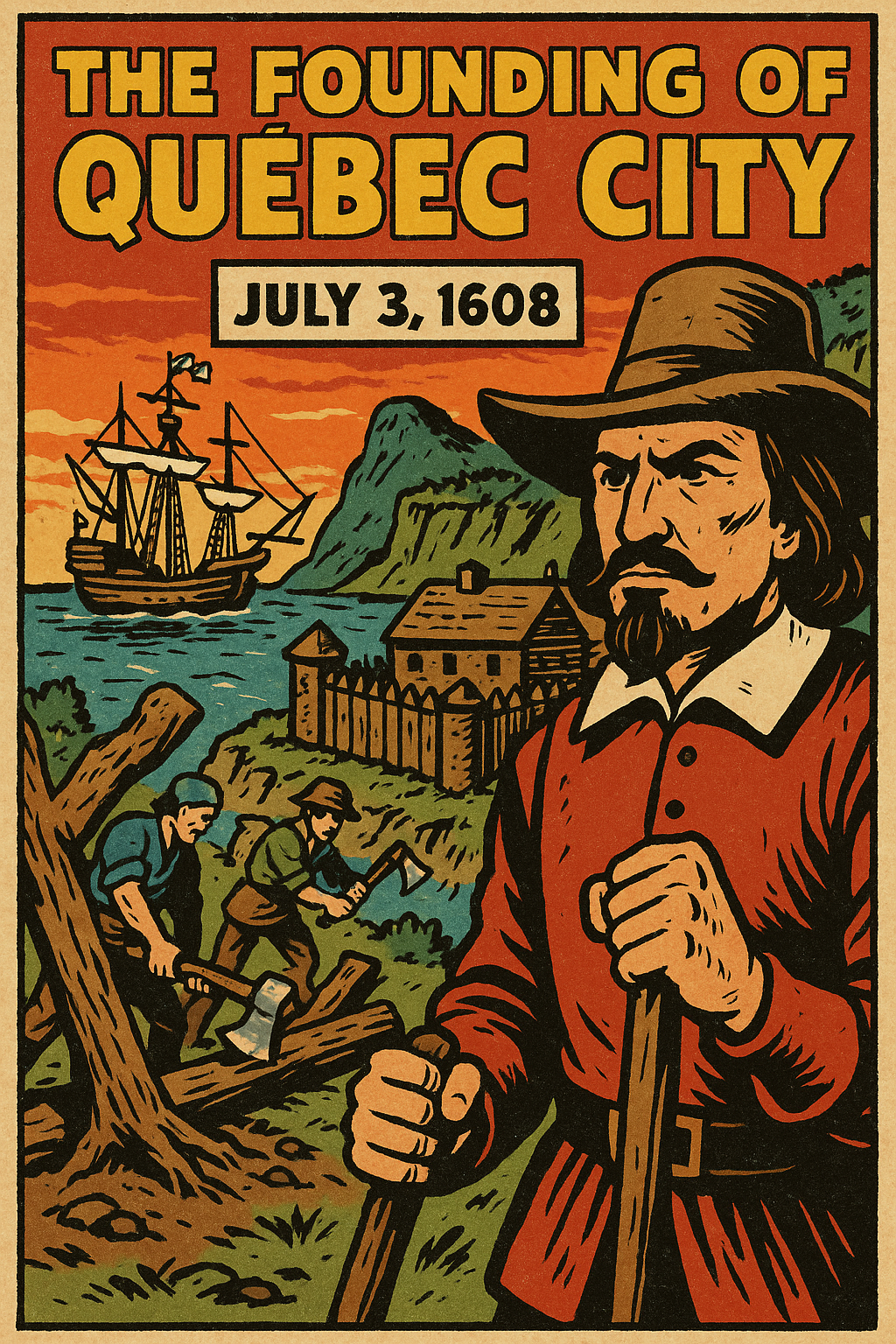
Today In Canadian History July 3rd, 1608: Where the River Narrows: Champlain Founds the Habitation of Québec
Share
On this day, July 3rd, in 1608, a small French ship, the Don-de-Dieu, captained by Samuel de Champlain, anchored in the shadow of a great rocky promontory. On the shore below, Champlain and a small band of men began to fell trees and clear land. This was no temporary camp; this was a deliberate act of creation. At the place the local Algonquin people called "Kébec" – meaning "where the river narrows" – Champlain founded the settlement that would become Québec City, laying the permanent foundation for New France in North America.
The choice of location was a stroke of strategic genius. The narrowing of the St. Lawrence River and the towering cliffs of Cap Diamant offered a natural, defensible fortress from which to control the vital fur trade network. The structure they built, the "Abitation de Quebecq," was a fortified compound with a storehouse, living quarters, a palisade, and a moat—a clear statement that the French were here to stay.
But survival was not guaranteed. That first winter was a brutal test. Of the 28 men who remained with Champlain, only eight survived the ravages of scurvy and the bitter cold. Champlain himself survived an assassination plot. Yet they persevered. The Abitation became the vital anchor from which Champlain launched his great explorations and forged alliances with Indigenous nations. It became the cradle of French civilization in the Americas, and the city that stands today, a UNESCO World Heritage site, still echoes the vision and determination of its founder on this pivotal day over four hundred years ago.
